Redirects are an important part of technical SEO.
They allow keeping your website’s URL structure consistent, which is good for both users and search engines.
So, are you ready to learn more about them?
This post will discuss what they are and when you should use them (with an exhaustive list of all the available redirects).
Contents:
What Are Redirects?
Redirects are simply server-side rules that tell a web browser (like Google Chrome or Mozilla Firefox) to go to a different URL than the one it originally requested.
They can be used for different reasons, but the most common ones are the following.
- Fix broken links. If you have moved a page on your website, you can use a redirect to send users (and search engines) to the new page
- Create short URLs. You can use a redirect to create a shorter and more user-friendly URL for a long and complicated one
- Handle different versions of your website. If you have a mobile version of your website, you can use redirects to send mobile users to the correct URL
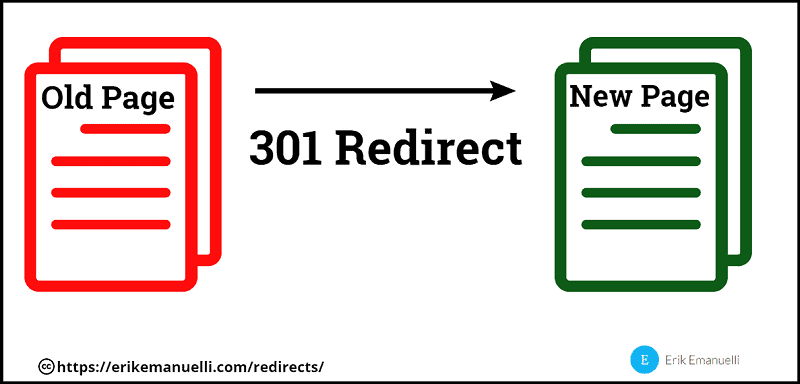
Are Redirects Bad for SEO?
No, they are not bad for SEO. Unless you don’t abuse!
Redirects allow you to keep your website’s URL structure consistent, which means:
- Better user experience for visitors. Imagine people landing on a “404 page not found” message. By sending them to the right page, you are improving the user experience.
- Easier for search engines to crawl and index. By redirecting pages to their new location, you are making it easier for search engines to find and index all of your content.
Now, it is important to note that too many redirects can slow down your pages.
Loading speed is a ranking factor and you want to make sure that your website is as fast as possible.

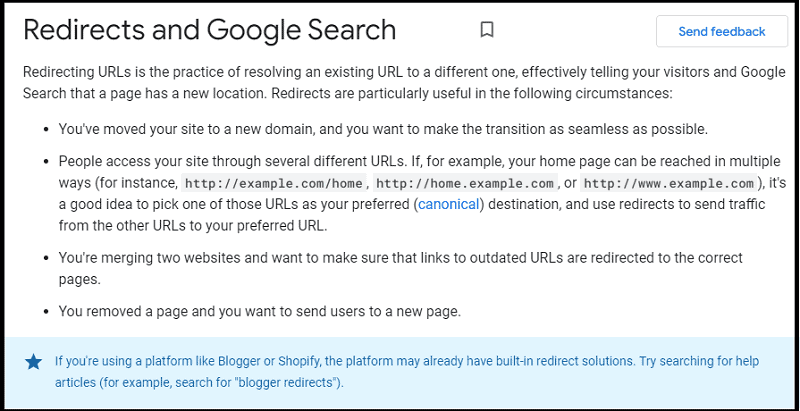
When Should You Use Redirects?
Here are some of the most common situations:
- Moving Domains
- Merging Websites
- Switching to HTTPS
- Doing a Promotion
- Deleting Pages
Moving Domains
If you are moving your website to a new domain (for example, when you rebrand your business), you will need to set up redirects.
Merging Websites
If you are merging two websites, you will need to send users from one site to another.
Switching to HTTPS
If you are switching your website from plain text (also known as “insecure”) to secure (also known as “HTTPS“), you will need to redirect the traffic from one to another.

Doing a Promotion
If you are doing a promotion, you may want to target all your visitors in one place.
For example, during Black Friday, you may want to send your users to the sales page.
Deleting Pages
If you are deleting pages on your website, you will need to create redirects to related new content.
This will help ensure that your users can still find what they are looking for, even if the page they originally wanted is no longer available.

Redirects Common Examples
Here are some of the most common cases:
- Send Users to the Main Version of Your Website
- Avoid Duplicate Pages
- Keep the Link Equity of an Old URL
Send Users to the Main Version of Your Website
Some websites use the old insecure protocol HTTP while many others update to the secured version HTTPS.
If you are one of those who updated, you might want to send users from the old pages to the new ones so that they land on the main version of your website.
Also, you should decide either with or without “www” and move all other traffic to that main version.
Avoid Duplicate Pages
If you have multiple pages with the same or similar content, you can use a 301 redirect to send users (and search engines) to the right page.
This is important because duplicate content can hurt your SEO.

Keep the Link Equity of an Old URL
When doing this practice, you also have the option to preserve the link juice of an old URL.
This is important because link equity is a measure of the strength or value of a website’s inbound links.

Types of Redirects
There are many different types of redirects, but they fall into two main categories:
Server-Side Redirects
These are the most efficient and search engine-friendly kinds of redirects.
They use an internal server setting to redirect traffic from one URL to another.
Some common server-side types include:
- 301 redirect
- 302 redirect
- 303 redirect
- 307 redirects
- 308 redirects
301 Redirect
301 is a permanent redirect.
It tells search engines that a page has moved permanently and that they should update their indexes to reflect the new location.
In front of a 301 redirect, search engines transfer the SEO rankings and equity of the old page to the new one.
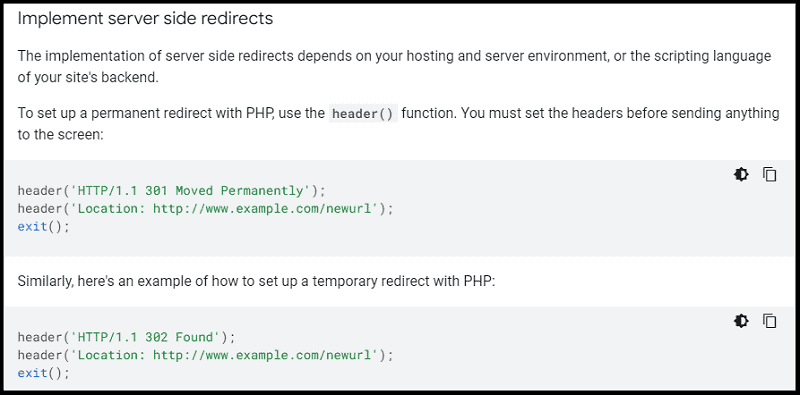
302 Redirect
302 is a temporary redirect.
It tells search engines that a page has moved temporarily and that they should not update their indexes.
In front of this command, search engines keep the old URL in rankings and don’t transfer equity to the new page.
However, if it stays for a long time, search engines might treat it as a 301 redirect.
303 Redirect
303 is a temporary redirect and brings users to a similar resource to the one requested.
For example, it can be used to prevent form resubmission when refreshing a page.
It’s important to know that it doesn’t transfer SEO rankings and value like a 301 redirect.
307 Redirect
307 is similar to a 302 redirect but it’s used for POST, and GET requests.
This type is often used when a website needs to change its URL but doesn’t want to lose SEO rankings and equity.
308 Redirect
308 is similar to a 301, except it keeps the HTTP method of the original request intact.
Client-Side Redirects
Client-side redirects are less efficient and not as search engine friendly as server-side.
They use HTML, JavaScript, or other types of code to send traffic from one URL to another.
Some common client-side types include:
- Meta refresh redirects
- JavaScript redirects
- iFrame redirects
Meta Refresh Redirects
Meta refresh redirects use the HTML meta tag to instruct web browsers to automatically refresh the page and send users to a new URL.
They are not as efficient or search engine friendly as other types of redirects because they require an additional round trip to the server.
Google said “it is not recommended to use them“, because “users may not see the content that they were expecting to find when they clicked on a search result” (instead, use a 301 redirect).
JavaScript Redirects
These use JavaScript code to move users to a new page.
iFrame Redirects
An iFrame redirect uses an HTML element called an iFrame to embed another webpage inside the current page.
The embedded webpage then sends people to a new page.
Redirect Best Practices
Here are some best practices to follow:
- Redirect HTTP to HTTPS
- Use HSTS
- Avoid Meta Refresh Redirects
- Redirect Old Pages to New, Relevant Ones
- Avoid Redirect Chains
- Avoid Redirect Loops
Redirect HTTP to HTTPS
One of the most important redirects best practices is to send traffic from your non-secure HTTPS site to your secure one.
This is because Google gives preference to websites that are served over a secure connection.

Use HSTS
HSTS (HTTP Strict Transport Security) is a security measure that tells web browsers to only communicate with websites over a secure connection.
It’s important to use it if you’re sending traffic from your non-secure site to your secure one.
This is because HSTS will ensure that traffic is always redirected to the secure version of your site, even if users type in the non-secure URL.
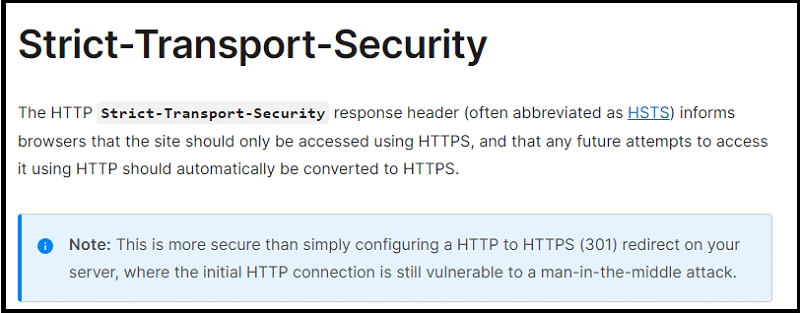
Avoid Meta Refresh Redirects
Meta refresh redirects are not as efficient or search engine friendly as other types.

Redirect Old Pages to New, Relevant Ones
If you have old pages on your website that are no longer relevant, it’s important to replace them with new, relevant pages.
Why?
This is because users can have a bad experience if they land on an old page that is no longer relevant.
Avoid Redirect Chains
This occurs when there is more than one redirect between the initial and final URL.
They can negatively impact SEO because they add too many extra hops that must be followed to reach the final page.
In addition, they can also slow down page loading times.
To avoid this kind of issue, ensure only one redirect between the initial and final URL.


Avoid Redirect Loops
This happens when there is a continuous sequence of redirects between two pages.
Redirect loops can cause errors on your website and make it difficult for users to access the content they’re looking for.
To avoid them, ensure that there is only one redirect between the initial and final URL.
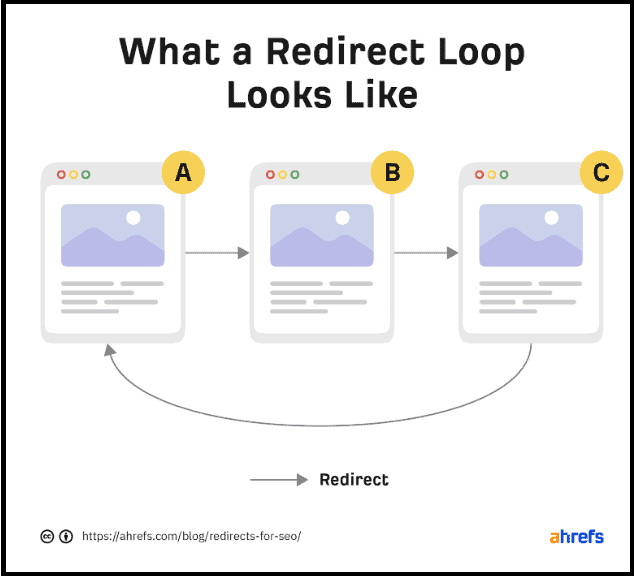
Redirect Checker Tool
If you want to check whether or not you set up everything correctly, you can use a redirect checker tool.

It also highlights the redirects in red so that you can easily see them.
To use it, install the extension in Chrome and then visit the URL that you want to check.
It will show you the redirect path of the URL and highlight any redirects in red.
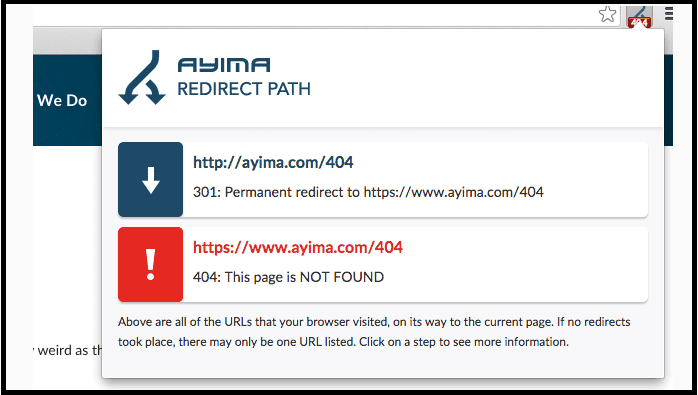
Before You Go
Redirects are just one part of the SEO equation.
In fact, there’s much more to learn about it.
Technical SEO is complex and involves a lot of different factors, such as:
So, now it’s over to you.
Have you ever set up a redirect?
Please share your experience in the comments below.
Thanks!

Good job as always Erik. I needed to do a redirect a few times to deal with some site usability issues, here and there. Why not direct traffic to an active, legit link versus having a blog littered with dead links? Blogging gets a lot easier when you are willing to do legwork that avoids killing the user experience.
Ryan
Exactly, Ryan.
Thanks for stopping by and leaving your thoughts.
Thanks, Erik, I have been deleting old posts and redirecting them to newer relevant ones. I hope I don’t have the chains, as you have shown here. I will check that out. I’m happy to see there is a tool we can use as well. That’s awesome!
Thanks for checking the post, Lisa.
Yeah, there are tons of useful Chrome extensions for SEO:
https://erikemanuelli.com/seo-chrome-extensions/
Wow! Never knew about this. I have always had the impression of redirects as a problematic thing for search engines but who knew these have such amazing potential for SEO?
Thanks a ton for this article!
Good to hear you learned something new here, Jayteerth.
This is a great article. When I first started maintaining my Drupal website, I was constantly modifying urls for SEO, but I had already linked to that page and had to add a redirect. I ended up having a lot of redirects that passed through 10+ urls. I ended up having to delete all of my redirects and start from scratch.
Hi Ryan,
thanks for sharing your experience with redirects.
I think it all comes to make things as simple as possible
(and the same concept focused on users).